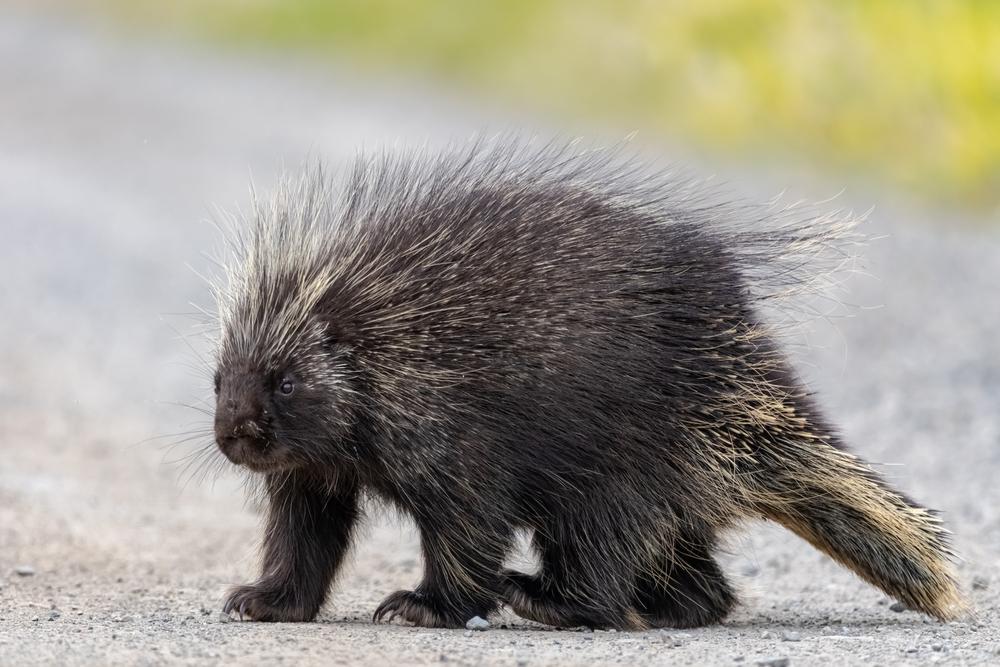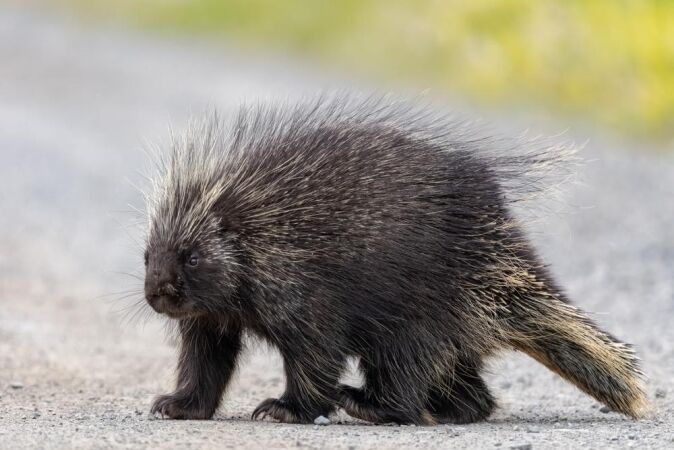

If you are looking for a game hunting adventure with a difference, then perhaps a night hunt for the Cape porcupine is right up your street! Hunting in the wild has never been as exhilarating as seeking out this nocturnal rodent seen by many farmers as a pest due to its destructive feeding habits on their root crops, potatoes, and maize. It’s a case of almost “anything goes” for firepower – air rifles, spears, or a small caliber rifle. At present, Cape porcupines are listed as being of “least concern” by the IUCN.
The African Porcupine (Hystrix africaeaustralis), also known as the Cape Porcupine, is the largest rodent in Africa and the world’s largest porcupine. Weighing 22-53 pounds, with larger specimens reaching 66 pounds, this rodent is known to inhabit habitats from sea level to 6,600 feet. They are, however, not found in swampland areas and are not too fond of dense forests and deserts.
Cape porcupines inhabit the savanna, subtropical or tropical dry shrublands and grasslands, artificial or terrestrial plantations, rural gardens, and arable lands. Their shelter during the day includes caves, abandoned burrows, or other types of holes that they have modified to suit their particular requirements,
These creatures are monogamous, actively reproducing throughout the year. Porcupines are nocturnal and live alone, coming together in pairs to breed and raise their young. Breeding happens between spring and summer in the southern hemisphere. Females give birth to one baby, called a porcupette.
They tend to shuffle and walk slowly but can run fast when needed but are unable to jump or climb trees.
Cape porcupines are mainly vegetarian, living on roots and bulbs. They use their strong claws to dig and forage for food. They are unable to climb trees, but enjoy fallen fruits and even sometimes gnaw on tree bark. They have eaten carrion in some instances. In areas deficient in phosphorous, they practice osteophagia or gnawing on bones and accumulate large piles of bones in their dens.
Name:
Hystrix Africaeaustralis
Weight:
22-66 pounds
Range:
Most of Sub-Saharan Africa and Northern Africa
Mating Season:
September – December
Life span:
12-15 years
These Rodents are Hunted with an Air Rifle, Spear or any Small Calibre Rifle
The Cape porcupine weighs 22-53 pounds, with some large specimens reaching up to 66 pounds. Cape porcupines are heavily built with bristle-covered bodies and short legs and tails. They have greyish-brown bristled faces with small eyes near the back of their heads. Their ears are inconspicuous and shaped like human ears. They have quills and spines on their posterior back and flanks. The difference between quills and spines is one of length and thickness, with spines up to 19 inches long and quills up to about 11 inches long. When its spines and quills are erect, it assists the Cape porcupine in looking more threatening. It is a fruitful method to scare off predators such as lions, leopards, and hyenas. It backs up into the prey, ensuring that the sharp spines and quills come off when touched by the predator. These razor-sharp spines and quills can end up piecing a vital organ or even get stuck in the mouth of the prey, making it unable to eat and die a long, slow, and agonizing death. Once the quills and spines have come off, they grow back quickly.
When hunting in Africa, many hunts are opportunistic, and the Cape porcupine is one of them. Many game hunting safaris for porcupines take place after dark, while on the lookout for other animals.
The Cape porcupine remains a great trophy from an African game hunting safari and is a specialty animal to harvest. When hunting in Africa, nothing is a given, and should a Cape porcupine be unlucky enough to cross your path, take that shot and enjoy a rare reward while hunting in the wild.
When it comes to porcupine hunting, use the rifle that you are most comfortable shooting. Load with excellent quality bullets. Porcupines are often quite hard to kill. They have surprisingly tough torsos. Shotguns are also used and loaded with birdshots. Depending on the distance to the porcupine using a shotgun, the trophy can be at risk of damage. A well-placed bullet from a .22 caliber will also get the job done effectively.
Search from our range of Hunts across various popular destinations in Africa.
Find A Hunt